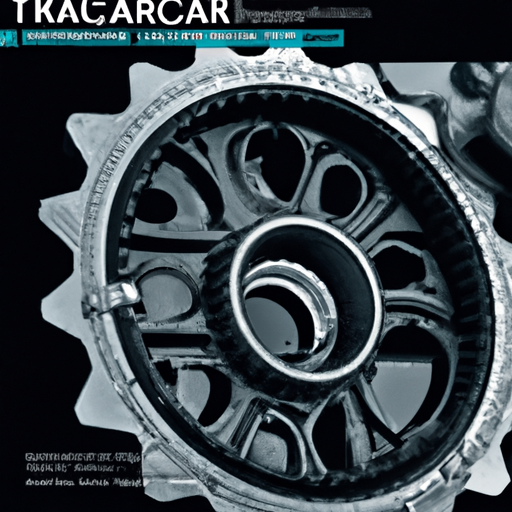Are you a proud owner of a Jeep vehicle equipped with Quadra Trac 2? While this innovative four-wheel drive system offers superior traction and control, it’s not without its share of issues. In this article, we’ll take a closer look at some of the common problems that Quadra Trac 2 owners might encounter and explore potential solutions. Whether you’re experiencing drivetrain complications or struggling with faulty sensors, we’ve got you covered with practical advice to keep you on the road and off the towing truck.
Common Quadra Trac 2 Problems
Quadra Trac 2 is a four-wheel drive system developed by Jeep to provide maximum traction and stability while driving off-road or in challenging conditions. While Quadra Trac 2 is known for its reliability, like any mechanical system, it can experience problems over time. In this article, we will explore the most common issues faced by Quadra Trac 2 owners and provide guidance on how to diagnose, address, and repair them.

1. Transfer Case Fluid Leaks
One of the most common problems encountered with Quadra Trac 2 is fluid leaks from the transfer case. The transfer case is responsible for distributing power to the front and rear wheels, and if it develops a leak, it can lead to a loss of fluid and subsequent damage to the system.
Causes of Fluid Leaks
There are several potential causes of fluid leaks in the transfer case. Common culprits include damaged seals, cracked or worn-out gaskets, loose or improperly tightened bolts, or even a faulty vent tube.
Symptoms of Fluid Leaks
To determine if your Quadra Trac 2 system has a fluid leak, you may notice puddles of fluid under your vehicle, a decrease in the transfer case fluid level, difficulty shifting gears, or unusual noises during operation.
Potential Damage and Impact
If left unaddressed, fluid leaks in the transfer case can lead to a loss of lubrication, increased friction, and eventual damage to vital components. It is crucial to promptly identify and repair any fluid leaks to prevent further complications.
2. Overheating Transfer Case
Another common problem that Quadra Trac 2 owners may face is an overheating transfer case. Overheating can occur due to various reasons and can affect the performance and reliability of the system.
Causes of Overheating
There are a few potential causes of an overheating transfer case. These include low or contaminated transfer case fluid, a malfunctioning cooling system, excessive strain on the system due to towing or heavy loads, or even a faulty temperature sensor.
Signs of Overheating
Signs that your transfer case may be overheating include a burning smell emanating from the transfer case, a noticeable increase in the transfer case temperature, warning lights on the dashboard, or a decrease in overall performance.
Consequences and Repairs
Continuous operation with an overheating transfer case can lead to severe damage to the gears, bearings, and other internal components. It is vital to address any overheating issues promptly to avoid costly repairs and potential system failure.
3. Shuddering or Vibrations
Quadra Trac 2 owners might also experience shuddering or vibrations while driving, particularly during acceleration or deceleration. These vibrations can be unsettling and may indicate an underlying problem within the system.
Possible Causes of Shuddering
Several factors can contribute to shuddering or vibrations in the Quadra Trac 2 system. These can include worn-out or damaged driveshafts, imbalanced or worn-out tires, faulty universal joints, or even issues with the transfer case itself.
Symptoms of Shuddering
If you notice your vehicle vibrating or shuddering during acceleration or deceleration, it is likely an indication of a problem within the Quadra Trac 2 system. Other symptoms may include abnormal noises, difficulty maintaining a steady speed, or a decline in overall performance.
Necessary Repairs
Diagnosing the exact cause of the shuddering or vibrations is crucial to determine the necessary repairs. Depending on the underlying issue, repairs may involve replacing driveshafts, balancing or replacing tires, replacing universal joints, or addressing transfer case issues.
4. Failure to Engage 4WD
One of the primary purposes of Quadra Trac 2 is to provide drivers with the ability to engage four-wheel drive (4WD) when necessary. However, there may be instances where the system fails to engage 4WD, leaving drivers without the additional traction and control it provides.
Potential Causes for Not Engaging 4WD
Several factors can contribute to the failure of the Quadra Trac 2 system to engage 4WD. These can include a malfunctioning transfer case motor, damaged or faulty wiring, a faulty selector switch, or issues with the transfer case itself.
Indications of 4WD Failure
If you find that your Quadra Trac 2 system is failing to engage 4WD, you may notice an inability to switch into 4WD mode, a lack of traction in challenging conditions, warning lights on the dashboard, or unusual noises during the engagement process.
Solutions and Fixes
It is essential to address any issues preventing the Quadra Trac 2 system from engaging 4WD to ensure optimal performance and safety. Solutions may involve repairing or replacing the transfer case motor, addressing wiring issues, replacing the selector switch, or seeking professional assistance for transfer case repairs.

5. Sensor Malfunctions
Quadra Trac 2 is equipped with various sensors that monitor and control the system’s operation. When these sensors malfunction, it can lead to incorrect readings, malfunctioning systems, or even complete failure.
Sensor Types in Quadra Trac 2
Quadra Trac 2 utilizes multiple sensors, including the wheel speed sensors, temperature sensors, position sensors, and pressure sensors. Each sensor plays a crucial role in ensuring the system functions optimally.
Signs of Sensor Malfunctions
Indications of sensor malfunctions in the Quadra Trac 2 system can vary depending on the specific sensor affected. Common signs include warning lights on the dashboard, erratic behavior of the system, lack of response to driving conditions, or abnormal readings on the vehicle’s display.
Troubleshooting and Repairing Sensors
Diagnosing and repairing sensor malfunctions may require specialized equipment and expertise. In some cases, recalibration or replacement of the sensors may be necessary to restore proper operation of the Quadra Trac 2 system.
6. Electrical Issues
Electrical problems can occur in any vehicle system, and Quadra Trac 2 is no exception. These issues can range from minor glitches to complete system failures, necessitating prompt attention and repairs.
Common Electrical Problems
Quadra Trac 2 may experience various electrical issues, such as blown fuses, faulty wiring connections, corrosion in electrical components, or issues with the vehicle’s battery or alternator.
Symptoms of Electrical Issues
Signs of electrical problems can manifest in different ways, including warning lights on the dashboard, intermittent system malfunctions, unresponsive controls, erratic behavior of the vehicle, or complete system failure.
Electrical System Repairs
Addressing electrical issues in the Quadra Trac 2 system may involve troubleshooting the source of the problem, repairing or replacing faulty wiring, addressing corrosion or loose connections, or fixing any underlying issues with the battery or alternator.

7. Grinding Noise
Grinding noises coming from the Quadra Trac 2 system can be indicative of underlying issues that require immediate attention. Identifying the source of the grinding noise is crucial to prevent further damage.
Potential Causes of Grinding Noise
Several factors can contribute to grinding noises in the Quadra Trac 2 system. These may include damaged gears or bearings within the transfer case, worn-out or misaligned driveshafts, or even issues with the limited slip differential.
Identifying Grinding Noise
If you hear a grinding noise while operating your Quadra Trac 2 system, it is essential to pinpoint its source. This can be done by paying attention to the noise’s location, timing, and accompanying symptoms, such as difficulty shifting or decreased performance.
Resolving Grinding Noise
To resolve grinding noises in the Quadra Trac 2 system, repairs may involve replacing damaged gears or bearings, realigning or replacing driveshafts, or addressing limited slip differential problems. Seeking professional assistance is recommended for complex repairs.
8. Limited Slip Differential Problems
Quadra Trac 2 includes a limited slip differential (LSD) that distributes power between the wheels for improved traction. However, this component can experience issues that affect its functionality.
Understanding Limited Slip Differentials
A limited slip differential allows power to be distributed between the wheels, providing optimal traction in various driving conditions without restricting wheel rotation.
Issues with Limited Slip Differentials
Limited slip differentials in the Quadra Trac 2 system can face problems such as worn clutch packs, improper lubrication, accumulation of debris or contaminants, or malfunctioning components.
Repairing Limited Slip Differential Problems
To address limited slip differential issues, repairs may involve replacing worn clutch packs, ensuring proper lubrication, cleaning out debris or contaminants, or replacing malfunctioning components. Seeking professional assistance is recommended for LSD repairs.

9. Axle Shaft Failures
Axle shaft failures can occur within the Quadra Trac 2 system, leading to compromised performance and potential safety hazards. Identifying and addressing these failures promptly is crucial.
Potential Causes of Axle Shaft Failures
Axle shaft failures in the Quadra Trac 2 system can arise due to various factors, including worn-out or damaged components, insufficient lubrication, excessive strain, or inadequate maintenance.
Signs of Axle Shaft Failures
Indications of axle shaft failures can manifest as unusual noises, vibrations, difficulty shifting, decreased performance, or even the inability to move the vehicle.
Necessary Repairs
Addressing axle shaft failures may involve replacing worn-out or damaged components, ensuring proper lubrication, correcting any underlying issues, or seeking professional assistance for complex repairs.
10. Software or Programming Glitches
As vehicles become more technologically advanced, software or programming glitches can affect various systems, including Quadra Trac 2. Understanding and resolving these issues is essential for optimal performance.
Impact of Software Glitches
Software or programming glitches in the Quadra Trac 2 system can lead to incorrect readings, malfunctioning controls, or even complete system failures, impacting the system’s functionality and reliability.
Identifying Software or Programming Issues
Identifying software or programming issues can be challenging without specialized diagnostic tools. Warning lights on the dashboard, system malfunctions, or unusual readings can be potential indicators.
Rectifying Software Problems
Resolving software or programming glitches may involve software updates, recalibration, or reprogramming of the Quadra Trac 2 system. Seeking assistance from a qualified technician or the vehicle manufacturer is recommended for software-related issues.
In conclusion, while Quadra Trac 2 is renowned for its reliability and off-road capabilities, it is important to be aware of the potential problems that may arise. By understanding the causes, symptoms, and necessary repairs for common Quadra Trac 2 problems such as transfer case fluid leaks, overheating transfer cases, shuddering or vibrations, failure to engage 4WD, sensor malfunctions, electrical issues, grinding noise, limited slip differential problems, axle shaft failures, and software or programming glitches, Quadra Trac 2 owners can take the necessary steps to maintain and restore the optimal performance of their vehicles. Regular maintenance, prompt repairs, and seeking professional assistance when needed ensure the longevity and reliability of your Quadra Trac 2 system.

